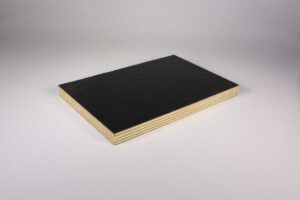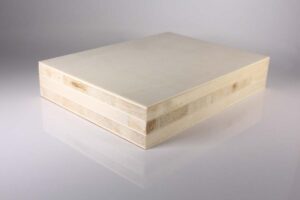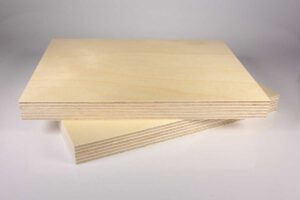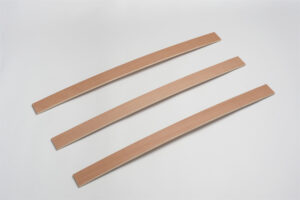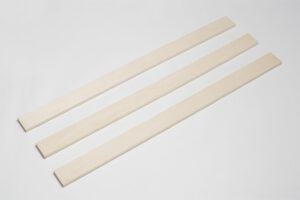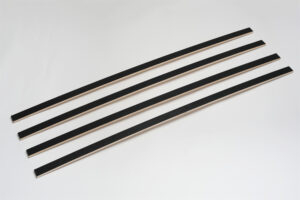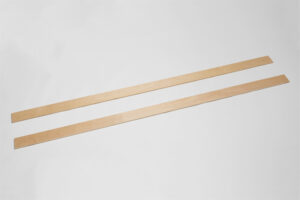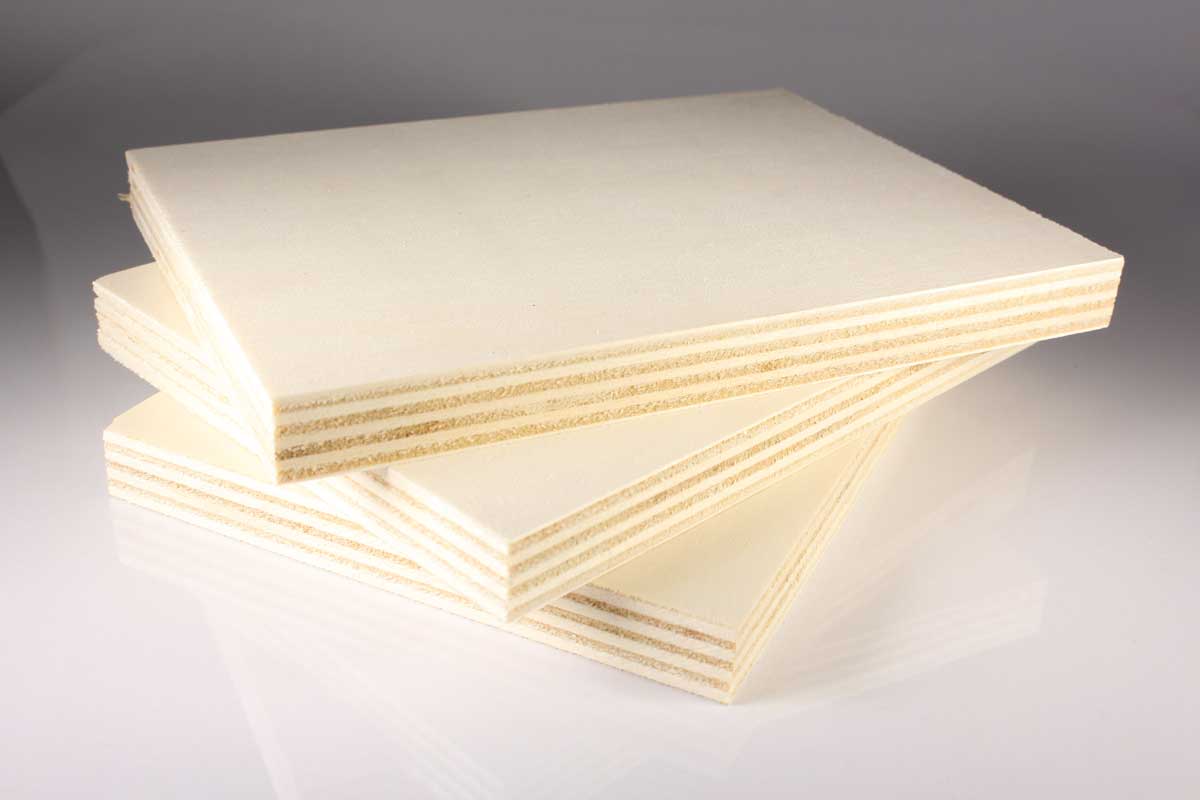
Marine Plywood
Marine plywood is an exceptional building material engineered for maximum moisture resistance and durability. Crafted from specially selected hardwood veneers and waterproof adhesives, it excels in boat building, docks, outdoor furniture, and any application demanding long-lasting performance in challenging environments. Its strength, dimensional stability, and resistance to rot, decay, and weathering make it the ultimate choice for projects where reliability and longevity are paramount.
Customization
Tailor products to meet your specific requirements.
Manufacturing
Consistent, durable products crafted with advanced techniques.
Logistics
Ensuring timely delivery to our clients worldwide.
share this product
Product Description
In the world of construction and boat building, where durability and moisture resistance are paramount, marine plywood reigns supreme. This specially engineered wood panel, crafted to withstand the harshest marine environments, has become the gold standard for boat builders, architects, and DIY enthusiasts seeking a reliable and long-lasting material. This comprehensive guide dives deep into the world of marine plywood, exploring its unique properties, diverse applications, and why it stands as a beacon of reliability in the face of demanding conditions.
From the rolling waves of the open ocean to the tranquil waters of a backyard pond, marine plywood has proven its mettle time and again. Its ability to resist moisture, rot, and fungal growth, coupled with its impressive strength and dimensional stability, makes it the material of choice for a wide range of applications where other materials would falter.
What is Marine Plywood?
Marine plywood is not just any plywood that’s been splashed with water resistance. It’s a meticulously engineered wood panel specifically designed to conquer the challenges posed by prolonged exposure to moisture, humidity, and the unforgiving marine environment. Unlike its interior-grade counterparts, which are often constructed using softwood veneers and less durable adhesives, marine plywood is built to last.
The secret to its resilience lies in its construction. Marine plywood is crafted using select species of hardwood veneers, known for their natural resistance to rot, decay, and marine borers. These veneers are then bonded together with waterproof adhesives, typically phenolic or epoxy resins, under intense heat and pressure. This process ensures a bond that is as strong as the wood itself, creating an impenetrable barrier against moisture intrusion.
Delving Deeper: Key Features of Marine Plywood
| Feature | Description |
| Core | Eucalyptus etc. |
| Face |
Okoume, Pine, Birch etc.
|
| Face Grade | B/B, B/C, C/C |
| Dimensions | 1220*2440 etc. |
| Thickness | 5mm-30mm |
| Glue |
Melamine UF, Phenolic UF
|
| Certificate | FSC/ CARB P2 |
Setting Sail: Applications of Marine Plywood
Marine plywood’s exceptional resilience against moisture, rot, and harsh weather conditions makes it the ultimate choice for a myriad of applications, both on and off the water:
-
Boat Building: The heart and soul of marine plywood lies in boat building. Its superior strength-to-weight ratio, dimensional stability, and resistance to moisture make it the ideal material for constructing various types of boats, from small sailboats and kayaks to larger yachts and commercial fishing vessels. Specific applications within boat building include:
- Hulls: The structural shell of the boat, requiring strength, durability, and resistance to water pressure to withstand the constant stress and strain of being in the water.
- Decks: The walking surface of the boat, exposed to foot traffic, water, and UV rays, demanding a material that can withstand wear and tear while providing a safe and stable surface.
- Bulkheads: Vertical partitions that divide the boat’s interior, providing structural support and creating compartments, requiring strength and moisture resistance to maintain the integrity of the boat’s structure.
- Cabins: Enclosed spaces within the boat that require moisture resistance and durability for long-term use, providing a comfortable and dry living space.
- Interior Joinery: Used for furniture, cabinetry, and other interior components, demanding a balance of aesthetics and moisture resistance to create a functional and visually appealing interior.
-
Docks and Piers: Submerged in water and exposed to the elements, docks and piers demand a material that can withstand the test of time. Marine plywood’s resistance to moisture, rot, and marine borers makes it an excellent choice for constructing these structures, ensuring their longevity and structural integrity, even in harsh marine environments. Specific applications include:
- Decking: Providing a stable and slip-resistant surface for walking and recreational activities, ensuring the safety and enjoyment of those using the dock.
- Structural Supports: Pilings, beams, and joists that support the weight of the dock and any structures built upon it, requiring strength and durability to withstand the constant exposure to water and the elements.
- Handrails and Railings: Ensuring safety and stability for those utilizing the dock, providing a sturdy barrier to prevent falls.
- Benches and Seating: Offering a place to relax and enjoy the waterfront views, requiring moisture resistance and durability to withstand the elements.
-
Outdoor Furniture: Garden furniture, patio decks, and outdoor kitchens are constantly subjected to the whims of nature. Marine plywood’s ability to withstand rain, humidity, and temperature fluctuations makes it a durable and long-lasting option for crafting outdoor furniture that can withstand the elements, providing years of enjoyment. Applications include:
- Tables and Chairs: Providing a sturdy and weather-resistant surface for dining and entertaining, ensuring that your outdoor furniture can withstand the elements and provide a comfortable and enjoyable experience.
- Benches and Swings: Offering comfortable seating options that can withstand the elements, providing a relaxing spot to enjoy your outdoor space.
- Planters and Raised Garden Beds: Creating durable and attractive containers for plants and flowers, adding a touch of natural beauty to your outdoor space.
- Outdoor Kitchens: Constructing cabinets, countertops, and other components that are resistant to moisture and heat, extending your living space to the outdoors.
-
Bathroom and Kitchen Applications: High-moisture areas like bathrooms and kitchens require materials that can handle humidity and splashes without warping or deteriorating. Marine plywood’s moisture resistance makes it a suitable choice for constructing bathroom vanities, kitchen cabinets, and other fixtures in these environments, ensuring their longevity and maintaining their appearance. Applications include:
- Bathroom Vanities: Providing a durable and moisture-resistant base for sinks and storage, resisting the growth of mold and mildew.
- Shower Walls and Floors: Offering a water-resistant alternative to traditional tile or acrylic, providing a durable and easy-to-clean surface.
- Kitchen Cabinets: Constructing cabinets that can withstand humidity and spills without warping or delaminating, maintaining their structural integrity and appearance.
- Countertops: Providing a durable and moisture-resistant surface for food preparation, resisting stains and scratches.
-
RV and Trailer Manufacturing: The lightweight yet strong nature of marine plywood makes it an ideal material for use in RV and trailer construction. Its ability to withstand vibrations, moisture, and temperature fluctuations ensures the longevity and structural integrity of these vehicles, providing a safe and comfortable travel experience. Applications include:
- Flooring: Providing a stable and durable base for walking and supporting furniture, resisting wear and tear from foot traffic.
- Walls and Ceilings: Creating a lightweight and structurally sound interior, providing insulation and reducing noise.
- Cabinetry and Furniture: Offering storage solutions and comfortable seating that can withstand the rigors of travel, maximizing space and comfort.
- Exterior Paneling: Providing a durable and weather-resistant exterior for the RV or trailer, protecting the interior from the elements.
-
Architectural Applications: Architects and designers are increasingly incorporating marine plywood into their projects for its unique aesthetic and durability. Its warm, natural beauty lends itself well to interior walls, ceilings, and decorative elements, adding a touch of nautical charm and sophistication to any space, creating a welcoming and visually appealing environment. Applications include:
- Wall Paneling: Creating a warm and inviting atmosphere in homes, offices, and commercial spaces, adding texture and visual interest.
- Ceiling Linings: Adding a touch of natural beauty and architectural interest to ceilings, creating a sense of warmth and sophistication.
- Furniture Design: Crafting unique and durable furniture pieces with a nautical aesthetic, adding a touch of coastal charm to any space.
- Decorative Accents: Using marine plywood to create wall art, shelving, and other decorative elements, adding a personal touch and visual interest to any room.
Riding the Wave: Advantages of Marine Plywood
Marine plywood’s dominance in marine and high-moisture applications stems from its impressive array of advantages:
-
Unmatched Moisture Resistance: The defining characteristic of marine plywood is its exceptional resistance to moisture, rot, and fungal growth. This is attributed to the use of waterproof adhesives and specially selected hardwood veneers that are naturally resistant to decay, ensuring long-term performance in challenging environments where other materials would succumb to the elements.
-
Exceptional Strength and Durability: Marine plywood’s cross-grained construction, where layers of wood veneer are stacked with alternating grain directions, and high-density hardwood veneers provide exceptional strength and durability, allowing it to withstand heavy loads, impacts, and vibrations, making it suitable for demanding structural applications where strength is paramount.
-
Dimensional Stability: Unlike solid wood, which can warp, twist, or cup when exposed to moisture fluctuations, marine plywood exhibits remarkable dimensional stability. This means it maintains its shape and integrity even in humid or wet conditions, ensuring the longevity and structural integrity of the structures it’s used in, providing peace of mind knowing that your project will stand the test of time.
-
Versatility in Design: Marine plywood’s smooth, consistent surface readily accepts various finishes, including paint, varnish, epoxy coatings, and even veneers. This allows for design flexibility, enabling you to achieve the desired aesthetic for your project, whether it’s a classic nautical look or a sleek modern finish, making it a versatile material for a wide range of applications.
-
Sustainability: Many manufacturers of marine plywood are committed to sustainable forestry practices, sourcing their wood from responsibly managed forests. Choosing plywood from these sources contributes to environmental conservation efforts, ensuring the long-term health of our planet’s forests, making it a responsible choice for the environmentally conscious consumer.
Charting the Course: Marine Plywood vs. Other Materials
| Material | Advantages | Disadvantages |
|---|---|---|
| Marine Plywood | Exceptional moisture resistance, high strength and durability, dimensional stability, versatile in design, sustainable options available | More expensive than exterior-grade plywood, requires proper sealing and finishing for optimal performance |
| Exterior-Grade Plywood | Moisture-resistant to a certain extent, suitable for some outdoor applications, more affordable than marine plywood | Not as moisture-resistant as marine plywood, may not be suitable for prolonged exposure to water or high humidity, lower quality veneers and adhesives |
| Pressure-Treated Plywood | Highly resistant to rot, decay, and insect infestation, suitable for ground contact and other high-moisture applications | Can be more brittle than marine plywood, may contain chemicals that can be harmful if not handled properly, not as aesthetically pleasing as marine plywood |
| Solid Lumber | Natural beauty, high strength in one direction, traditional building material | Expensive, prone to warping and cracking, requires careful selection and grading, labor-intensive to install, susceptible to moisture damage and insect infestation |
Navigating the Waters: Frequently Asked Questions (FAQ)
1. What type of adhesive is used in marine plywood?
Marine plywood utilizes waterproof adhesives, typically phenolic or epoxy resins, specifically formulated to create an impenetrable bond between the wood veneers. These adhesives are highly resistant to water, moisture, and temperature fluctuations, preventing delamination and ensuring the plywood’s long-term performance in marine environments. They are the key to marine plywood’s exceptional moisture resistance.
2. How do I protect marine plywood from UV damage?
While marine plywood is highly resistant to moisture and rot, prolonged exposure to UV radiation from the sun can cause surface degradation and discoloration. To protect your marine plywood from UV damage, it’s essential to apply a high-quality marine-grade varnish, paint, or epoxy coating. These coatings act as a barrier, shielding the plywood from harmful UV rays and preserving its appearance and integrity. Regular maintenance and reapplication of these coatings will ensure your marine plywood remains protected for years to come.
3. Can I use marine plywood for freshwater applications?
Absolutely! While marine plywood is specifically designed for marine environments, its exceptional moisture resistance and durability make it an excellent choice for freshwater applications as well. Whether you’re building a dock on a lake, a boat for freshwater fishing, or outdoor furniture for your backyard pond, marine plywood can withstand the challenges of freshwater environments. Its resistance to rot, decay, and fungal growth makes it suitable for any environment where moisture is present.
4. What is the lifespan of marine plywood?
The lifespan of marine plywood depends on various factors, including the quality of the plywood, the severity of the environment it’s exposed to, and the maintenance it receives. With proper care and maintenance, including regular cleaning, sealing, and refinishing, marine plywood can last for decades, even in demanding marine environments. Choosing high-quality marine plywood from a reputable manufacturer and following proper maintenance procedures will ensure your investment lasts for years to come.
5. Can I use regular plywood for marine applications?
Using regular plywood for marine applications is strongly discouraged. Regular plywood is not designed to withstand prolonged exposure to moisture and lacks the waterproof adhesives and specially selected veneers found in marine plywood. Using regular plywood in marine environments will likely result in delamination, rot, and structural failure, compromising the safety and longevity of your project. While it may seem like a cost-effective option, the potential for costly repairs and replacements far outweighs any initial savings.
Sailing into the Sunset: Conclusion
Marine plywood stands as a testament to human ingenuity, providing a building material that can withstand the harshest marine environments. Its exceptional moisture resistance, strength, durability, and versatility make it an indispensable asset for boat builders, architects, and DIY enthusiasts alike. From the grandest yachts to the smallest pieces of outdoor furniture, marine plywood consistently delivers exceptional performance and longevity. When your projects demand unwavering performance and longevity, choose marine plywood – the ultimate choice for conquering the waves and building structures that stand the test of time. Its ability to withstand the harshest conditions makes it a reliable and long-lasting investment for any project where moisture, durability, and strength are paramount.

